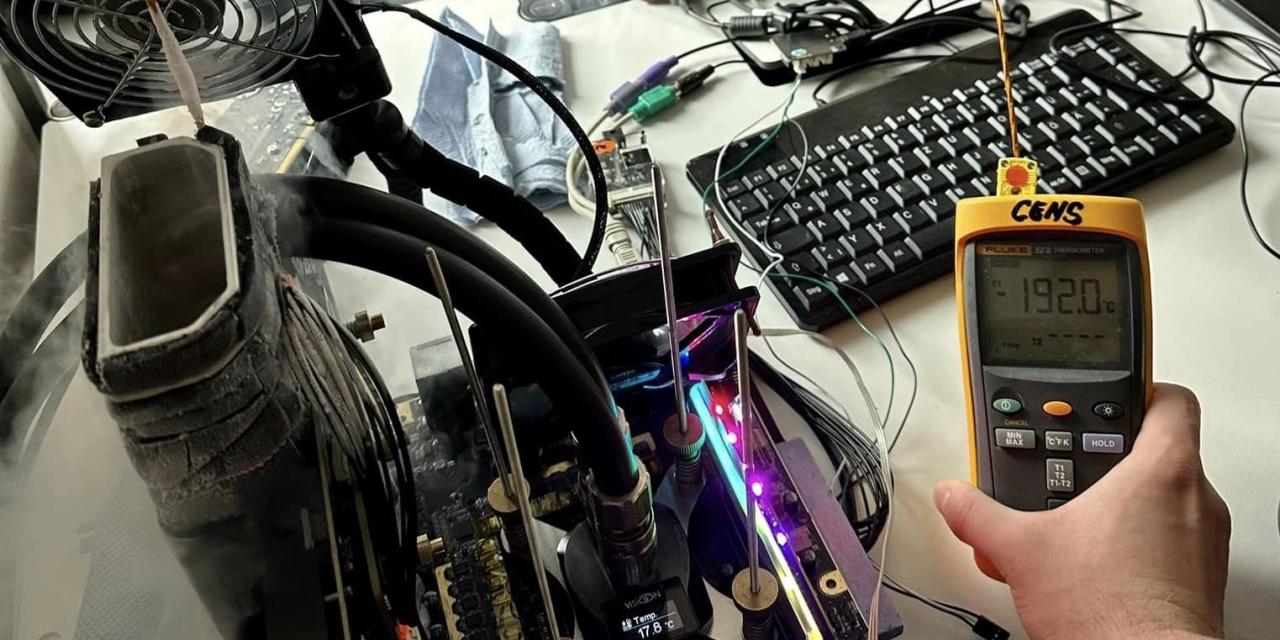
If you’ve invested in the supremely expensive Nvidia GeForce RTX 4090, then it’s highly likely you want to get the absolute most out of it. However, we doubt you’re likely to go to the same lengths as one particular overclocker, who has managed to get Nvidia’s latest flagship GPU up to a staggering 3.825GHz.
As a reminder, the RTX 4090 usually tops out at 2.52GHz, making this a dramatic 50% boost over its usual clock speed, and quite a big boast to make. But that’s exactly what overclocker CENS is claiming to have done, having made the impressive overclock on a Colorful iGame-branded version of the graphics card. Not only that, the system also completed a Unigine Superposition 3D render test in full, entirely in 8K.
Such an enormous gulf between what’s possible with the card and what Nvidia has it clocked at is testament to the strength of the 4nm process of the card, and shows that the RTX 4090 has plenty of room to overclock, even if you’re not willing to push the card to such lengths as CENS.
And push it they did. While it’s entirely possible to get such huge speeds out of the latest Nvidia card, you’re not exactly likely to be able to get it working on your home rig. To achieve these enormous speeds, CENS had to use liquid nitrogen to get the GPU’s temperature down to -192-degrees — cooling that’s not really possible with your usual fan or water cooling system.
Since possible performance is so high, it has to make you wonder whether Nvidia is purposefully holding its graphics cards back. It’s true that there’s no real competition in terms of pure power where the RTX 4090 is concerned, with AMD’s current top offerings not really being the same league. AMD will have new cards on the way soon, though, so it’s possible Nvidia may have to rethink this strategy down the line. But hey, when a GPU is priced at $1,600, you have to assume it’s capable of some pretty amazing things, and it turns out the Nvidia GeForce RTX 4090 truly is.
Image credit: CERNS
